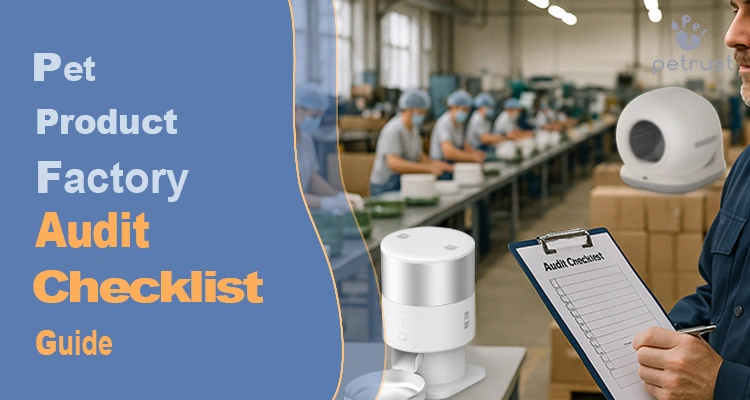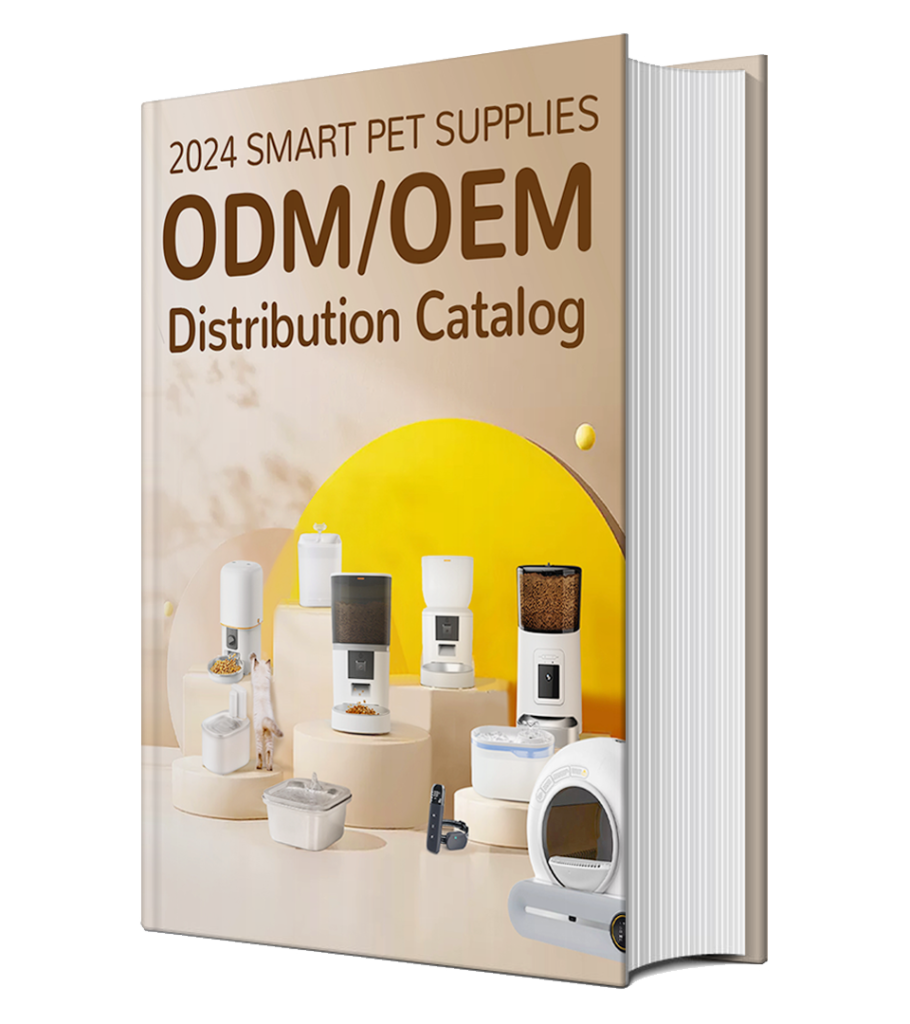A well-prepared Pet Product Factory Audit Checklist can save you from one of the most expensive mistakes in sourcing—choosing the wrong partner.
If you’re sourcing pet products from China, finding a factory is just the beginning. The real question is: Can they actually deliver what they promise? Quality materials? Stable production capacity? On-time shipments? Valid certifications?
Too often, suppliers look great on paper but fall short in execution. And when your shipment is delayed or your product fails a safety check, it’s your brand—not just the factory—that takes the hit.
That’s why doing a proper factory audit is so important. It’s your chance to verify, not just trust, and to protect your business before problems happen.
In this guide, you’ll get a step-by-step Pet Product Factory Audit Checklist tailored for 2025. Whether you’re visiting in person, working with a third-party inspector, or doing a remote review, these key checkpoints will help you:
- Assess real production capabilities
- Evaluate quality control systems
- Check legal and compliance readiness
- Spot red flags early—and avoid surprises later
Still looking for suppliers? Before you audit, make sure you’re vetting the right factories. Check out our Complete Guide to Pet Product Manufacturers in China (2025) for tips on how to find verified, OEM/ODM-ready partners.

Why Every Buyer Needs a Pet Product Factory Audit Checklist Before Placing an Order
When you’re sourcing from overseas—especially for a product as trust-sensitive as pet care—doing your homework isn’t optional, it’s essential. And that starts with one of the most powerful (yet often overlooked) tools: a Pet Product Factory Audit Checklist.
The Hidden Costs of Skipping a Factory Audit
It’s easy to be impressed by polished product photos, professional sales teams, or beautifully arranged showroom visits. But those things don’t always reflect what’s really happening on the production floor.
Many importers—especially when starting out—have learned the hard way that skipping the audit can lead to:
- Unknowingly working with a trading company instead of a real factory
- Production timelines that slip without warning
- Lack of quality control or missing certifications required for your market
- OEM/ODM capabilities that fall short of what was promised in the pitch
Even one misstep—one bad order—can lead to returns, customer complaints, platform bans, or worse: lasting damage to your brand’s reputation.
What a Good Audit Checklist Helps You Do
That’s where a structured audit checklist comes in. It gives you clarity, consistency, and confidence when evaluating a new supplier.
With a solid pet product factory audit checklist, you can:
- Verify whether you’re working with a real manufacturer—not a middleman
- Confirm the factory’s ability to meet your product specs, quality expectations, and volume requirements
- Check for valid certifications, testing procedures, and compliance practices
- Evaluate whether they’re truly capable of handling your custom branding or OEM/ODM needs
- Catch risks early—before they become expensive problems down the line
For any serious pet brand or distributor, auditing isn’t just about quality—it’s about protecting your long-term growth.
How to Use a Pet Product Factory Audit Checklist to Prepare for Inspection
A successful pet product factory audit doesn’t start on the factory floor—it starts with clarity. Whether you’re planning a sample order or preparing for long-term production, a Pet Product Factory Audit Checklist helps ensure you’re not just checking boxes, but asking the right questions to protect your business.
Get Clear on Your Scope and Audit Goals
Before diving into the audit, take a moment to clarify your sourcing context:
- What specific pet products are you sourcing? (Smart feeders? Water fountains? Litter boxes?)
- Are there any customization or regulatory requirements? (Logo printing, CE/FCC, RoHS compliance?)
- Is this a one-time quality check—or the beginning of a long-term OEM/ODM relationship?
Knowing what you’re looking for helps you focus your audit on what actually matters.
Tip: Define your deal-breakers and non-negotiables before the visit.
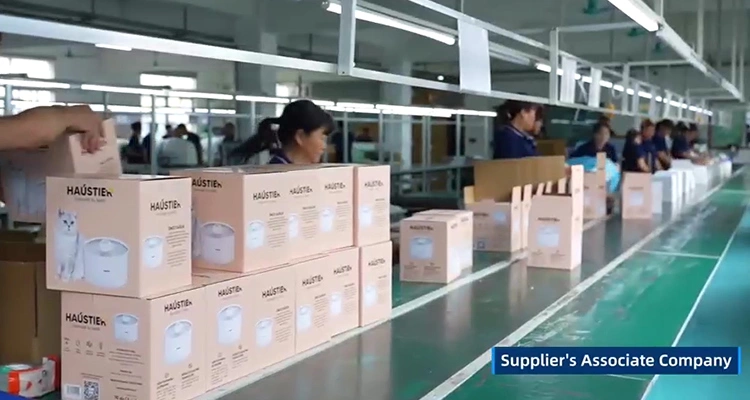
Choose the Right Audit Method for Your Needs
Your audit doesn’t have to look the same as everyone else’s—it just needs to be thorough and aligned with your resources. Depending on your location, budget, and timeline, you can choose from:
- In-person visit – Great for building trust and seeing operations firsthand (ideal for big orders or new suppliers).
- Third-party audit – Hire professional firms like SGS, TÜV, or BV to run the inspection on your behalf.
- Remote video audit – A flexible, lower-cost option that many reliable Chinese factories now offer.
Curious about how pet products are actually made in China? Explore this step-by-step guide to the manufacturing process to better understand what you should be looking for during the audit.
What to Request in Advance (Before You Step In)
To save time and ensure transparency, ask your supplier to prepare these materials ahead of the audit:
- Business license + official registration documents
- Product samples + relevant quality certificates
- Factory floor layout or production flow chart
- Lab test reports – including CE, RoHS, FCC, or FDA certifications, depending on product type
These aren’t just paperwork—they’re proof points. Having them in hand helps you evaluate the factory’s legitimacy, technical capacity, and export readiness before you commit.
Pet Product Factory Audit Checklist (2025): 10 Key Points You Must Check
Auditing a pet product factory isn’t just about checking off boxes—it’s about protecting your brand, your investment, and your long-term customer trust. Whether you’re sourcing smart feeders, water fountains, or litter boxes, this checklist will help you ask the right questions, spot red flags early, and build a solid foundation for cooperation.
1. Verify Company Legitimacy in Your Pet Product Factory Audit Checklist
Start with the basics—but don’t skip them.
- Review the business license (is it up to date and registered to the correct address?)
- Verify ownership structure (family-owned? part of a group?)
- Watch for signs of rented showrooms posing as factories
- Ask for factory photos or live video walkthroughs
Tip: Legitimate suppliers are transparent. If they hesitate to share documents or dodge basic questions—it’s a red flag.
2. Assess Production Capacity Using the Audit Checklist
You want to know: Can they actually handle your order? And your future growth?
- How many production lines are there?
- What machines are being used—and are they maintained regularly?
- What’s the factory’s daily/weekly output?
- Can they share a live or recent production schedule?
A pet product factory that’s already stretched thin may not be able to prioritize your order, even if they say yes.
3. Evaluate OEM/ODM Capabilities in Your Factory Audit Process
If your product requires customization or innovation, this part matters most.
Ask:
- Do they have in-house engineers or an R&D team?
- Can they support mold development or product structure changes?
- Any past custom projects to show?
Still exploring OEM vs. ODM? Here’s a detailed guide to help you choose the right model for your business.
If feeders are your focus, don’t miss this: How to Choose a Reliable Automatic Pet Feeder Factory in China
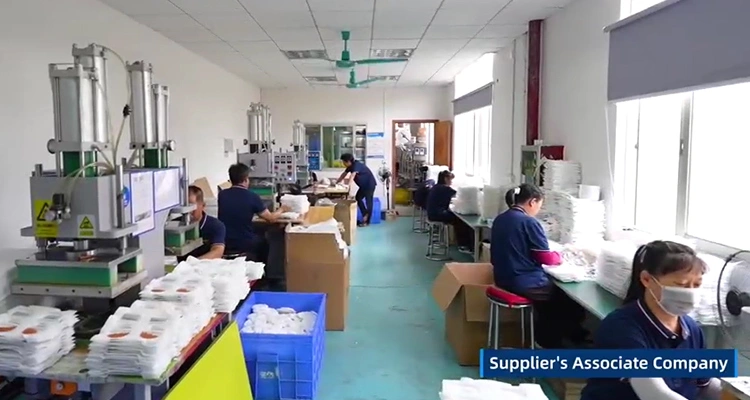
4. Inspect Raw Material Sourcing & Traceability
Great products start with great materials. Ask your supplier:
- Where are raw materials sourced from?
- Can they trace material origins and show supplier certifications?
- Are materials food-safe, BPA-free, or otherwise certified?
This is especially critical for anything that comes in contact with food or pets.
5. Check Product Certifications in the Pet Product Factory Audit Checklist
Depending on your target market, request and verify certifications like:
- CE, RoHS, REACH (for Europe)
- FCC, FDA (for the U.S.)
- ISO9001, BSCI, Sedex (for quality and social compliance)
Always ask for actual certificates, not just logos. Make sure company names and product models match.
Need clarity? Here’s a full guide to CE, FCC, and FDA certification requirements for pet tech products.
6. Review In-House Quality Control Systems
A strong QC system is a factory’s best indicator of consistency.
Ask to see:
- Incoming material inspection records
- In-process quality checks
- Final product testing procedures
- How they handle defects or non-conformities
Bonus: Ask if you can see real QC reports from recent orders.
7. Visit the Sample Room and Product Testing Facilities
This is where you see what the factory is really capable of producing.
Check for:
- Well-organized samples of past and current products
- Drop-test stations, water-resistance testing, or long-hour usage trials
- For smart pet gear: ask if they test usability with real animals

8. Evaluate Packaging & Private Label Capabilities
If branding matters (and it does), confirm they can support you:
- Can they customize boxes, stickers, or manuals?
- Are small-MOQ white label runs available?
- Do they offer design support for your logo and packaging?
Packaging is part of your customer experience. Make sure your supplier treats it that way.
9. Observe Labor Conditions and Workplace Safety Compliance
Don’t overlook this. Ethical manufacturing is good business.
- Are workers wearing proper safety gear?
- Are training records or labor compliance docs available?
- Do they follow legal hiring practices and local labor laws?
- Are facilities safe, clean, and well-ventilated?
Responsible sourcing builds long-term trust with your customers.
10. Take Real-Time Factory Photos and Verify On-Site Infrastructure
Skip the polished brochures. You’ll learn more with your own eyes (or lens).
Capture:
- Production lines in real-time
- Packaging and storage areas
- Sample room and QC stations
- Exterior shots of the facility (not just the office)
These photos are useful for internal reports, cross-checking consistency later, or validating new samples.
Common Red Flags Found in a Pet Product Factory Audit Checklist
Signs You Might Be Dealing with a Trading Company (Not a Real Factory)
Not all suppliers are who they say they are. If you’re expecting a manufacturer but get a middleman instead, you may face higher costs, weaker control over quality, and delayed communication.
Watch for:
- Reluctance or delay in showing you the actual production lines
- No verifiable ownership of the facility (no licenses, no nameplates, no legal documents)
- No in-house engineers, designers, or technical staff
- Outsourcing core production processes like injection molding or PCBA assembly
Why it matters: You can’t build a long-term brand on a foundation of vague promises and subcontracted output.
Poorly Maintained Equipment or Chaotic Factory Layout
The state of the workshop says a lot about how your product will be made.
Warning signs include:
- Dusty, rusty, or visibly damaged machines
- Raw materials, cartons, or waste scattered on the floor
- No clear workflow; items pile up randomly between stations
- Hazardous areas with no safety markings or protocols
Why it matters: Disorganization often reflects poor internal systems—and increases the risk of defects, delays, and safety issues.
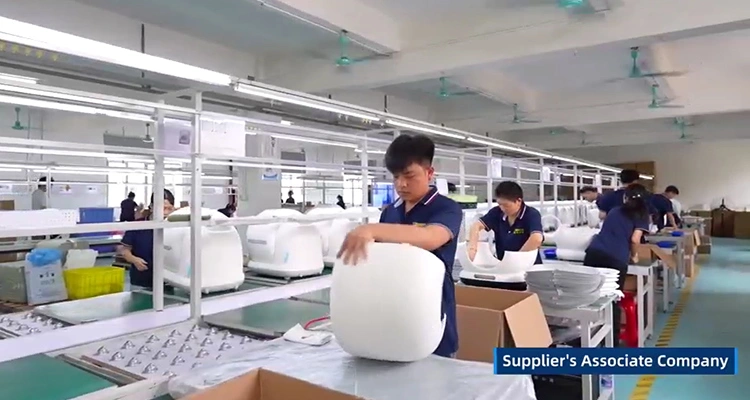
Unrealistic Claims Without Technical or Legal Backing
It’s easy to say “yes” to everything. But without solid proof, that optimism can lead to big disappointments.
Be cautious if a supplier says things like:
- “We can manufacture any product you want”—but can’t show similar work
- “We’ll send you the certifications after you place the order”
- “No problem” to complex features without technical documents or design input
- Vague or contradictory answers when asked about testing, compliance, or firmware
Why it matters: Confidence is good—unless it’s covering up a lack of experience or capacity.
Real Case Example: How a Pet Brand Avoided a Costly Mistake Through an Audit
In early 2024, a growing UK-based pet brand was ready to scale. They had a promising automatic feeder design, strong market demand, and what seemed like a reliable supplier in China—someone who said they owned their own factory.
Everything looked good on paper. But before signing the deal, the brand decided to request a virtual audit—just to be sure.
What they discovered changed everything.
The supplier turned out to be a trading company outsourcing production across three separate workshops, with no centralized quality control and no consistent customization process. Had they moved forward, the brand would’ve risked inconsistent quality, missed timelines, and potential compliance issues.
Instead, they switched to a verified factory with real ownership and in-house production—and the results spoke for themselves:
- Reduced lead time by 25% thanks to streamlined internal processes
- Full control over product customization, from materials to packaging
- Saved over $20,000 in what would’ve been post-order corrections, rework, and relabeling
For the brand, the audit wasn’t just a formality—it was a turning point.
It turned a risky guess into a confident partnership.
What to Do After Completing the Pet Product Factory Audit Checklist
You’ve done the audit, gathered the facts, and now it’s time to turn that information into action. But if you’re wondering “What now?”—you’re not alone.
Whether you visited the factory in person or worked with a third-party inspector, the next step is to score, compare, and decide. Here’s how to approach it with clarity and confidence.
How to Score and Compare Audit Results
Use a simple 1–5 rating system across key categories to create a side-by-side comparison of your shortlisted suppliers. Focus on the things that matter most for long-term success:
- Compliance: Are certifications valid and up to date?
- Quality: Are there robust QC processes and production standards in place?
- Transparency: Are they open about ownership, factory structure, and documentation?
- Customization Fit: Can they support your OEM/ODM needs now—and scale with you later?
Create a summary table or ranking sheet—this will make your final decision much clearer, especially if you’re comparing multiple candidates.
When to Proceed, Negotiate, or Walk Away
Proceed if the factory:
- Meets all core requirements
- Shows consistent communication
- Demonstrates willingness to grow with your brand
Request Improvements if:
- Minor gaps exist (e.g., missing QC documentation or unclear workflow)
- The supplier is cooperative and willing to address issues quickly
Walk Away if you encounter:
- Faked certifications or unclear ownership
- Evasive answers about compliance, capacity, or staff
- Poor attitude toward transparency or audits
- Even a beautiful showroom can’t fix a broken backend.
After your audit, the next step is often sampling—learn how to request and assess pet product samples professionally to avoid surprises later.
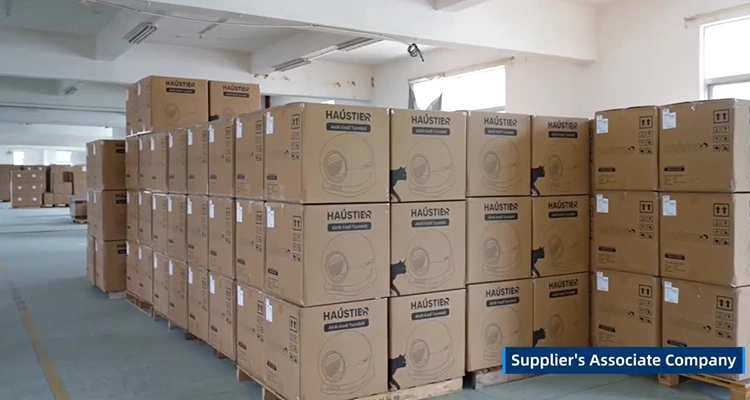
FAQs About Pet Product Factory Audit Checklists
How often should I audit a pet product factory?
We recommend conducting a full factory audit before placing your first order, no matter how promising the supplier seems. If you continue working together, a yearly follow-up audit helps ensure they’re still maintaining the standards your brand expects.
Think of it like an annual health check—preventive, not reactive.
Can I perform a pet product factory audit remotely?
Absolutely. Many reliable suppliers now support live video audits or pre-recorded walkthroughs, which are especially helpful during travel restrictions or early-stage vetting.
While it’s not a full substitute for an on-site visit, remote audits can give you a solid first impression of their operations.
Should I hire a third-party audit firm?
If you’re placing a large order or don’t have an experienced in-house QC team, working with a professional third-party firm is a smart move.
They provide unbiased reports, often with photo/video evidence, and can spot issues you might miss—giving you peace of mind before production even begins.
What’s the difference between a factory audit and a product inspection?
Great question—and an important one to understand.
- A factory audit focuses on the supplier’s production capabilities, systems, compliance, and working conditions.
- A product inspection evaluates the quality, packaging, and functionality of your actual goods—usually at the pre-shipment stage.
Both are important tools for risk management—but they serve different purposes at different stages.
Final Thoughts: The Pet Product Factory Audit Is Your First Line of Defense
If you’re serious about building a sustainable, trustworthy pet brand, then your pet product factory isn’t just a vendor—it’s an extension of your values. It’s where your product vision becomes reality, and where customer expectations are either met… or missed.
That’s why a thoughtful, well-executed Pet Product Factory Audit Checklist isn’t just about catching problems.
It’s about building peace of mind before the first unit is even made.
A proper audit gives you clarity on:
- What the factory can really deliver—not just what’s in the brochure
- How serious they are about quality, compliance, and communication
- Where potential risks are hiding before they turn into costly mistakes
It also gives you the confidence to:
- Negotiate with facts, not assumptions
- Commit to long-term partnerships, not short-term fixes
- Scale your brand with fewer surprises and more control
- Your time, your brand, and your customer promise deserve that level of care.
So before you place your next order, take the time to audit well. It’s not just about due diligence—it’s about setting the stage for everything that comes next.

